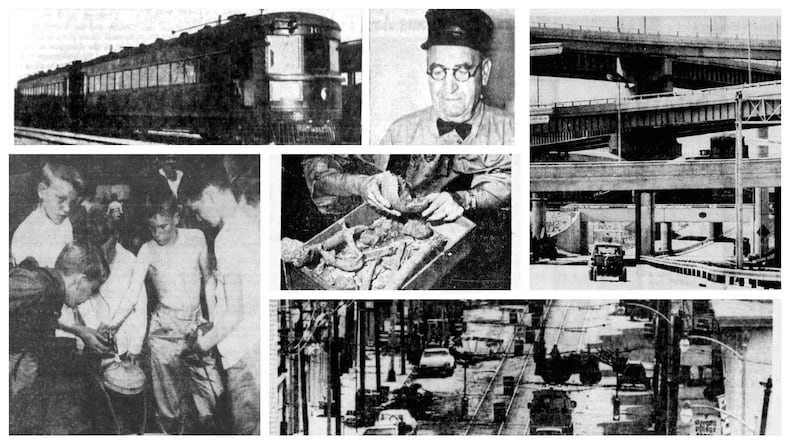Here’s a look at some stories from the week of April 28-May 4.
April 30, 1939: Last Interurban car soon to make last trip from Dayton
Before the days of highways, there were “interurban” traction cars.
These railways traveled between cities such as Dayton, Middletown, Franklin, Miamisburg, West Carrollton and beyond. They allowed for rapid transit for both passengers and freight.
The C.H. and D. (Cincinnati, Hamilton and Dayton) line was one of the first and became the last.
After 40 years of service, on May 13, 1939, the last train was to head south, never to return.
Cars, trucks and buses had taken over as the preferred manor of transportation.
May 1, 1949: Skeleton discovery near Miamisburg may shed light on Ohio lore
Petrified human remains were discovered near Miamisburg and they were thought to belong to one of Ohio’s prehistoric “mound-dweller” Native American tribes.
Farmer John McCabe, while plowing, found the skeleton in one of his fields. Most of the bones were broken or decaying, but the jaw bone was intact.
A guess by C.A. Barker, director of the Dayton Public Library Museum, was that the skeleton might be at least 500 or 600 years old.
The fact that the bones were found on the top of a hill indicated that the location might have been a regular Native American burial ground.
The “mound” area around Miamisburg was the site of other Native American artifacts through the years.
The remains were to be sent to the coroner for observation and then to the University of Dayton for further study.
May 3, 1959: 4,000 Scouts fold tents at Greenville Camporee
The 13th annual Boy Scout Camporee of the Miami Valley council was underway, and the smell of beans and bacon filled the air.
Greenville’s City Park looked like a military encampment with 4,000 boy scouts living in what looked like tent cities.
Troops in attendance hailed from Preble, Shelby, Miami, Montgomery and Darke counties.
A myriad of projects and activities were planned, including archery, knot-tying, trail-blazing, nature study, basket-weaving, tent-pitching, bridge-building, rope ladders, and more.
May 4, 1969: Ribbon cutting for Ribbon Road
Motorists traveling west on Route 35 were about to see a massive new interchange leading to Interstate 75.
Looking like a series of broad, concrete ribbons, the eight-story structure was set to open after a ceremony with top local and state officials.
Construction on the $23.5 million structure had begun five years prior, in 1964. The project was delays due to “terrific logistics” problems and a labor shortage.
The new interchange allowed motorist new methods to access the central business district through Ludlow and Perry Streets.
April 29, 1979: Oregon District merchants wait out road repairs
In 1979, there was a lot of activity in the Oregon District, but it wasn’t the kind that store owners liked.
There were mounds of dirt and huge holes in the road. The air was filled with the sounds of jackhammers, dump trucks and tractors.
Crews were working on a $500,000 refurbishing of East Fifth Street between Patterson and Wayne Avenue.
The street was being narrowed so the sidewalks could be wider. Trees, shrubs, flower planters, benches and turn-of-the-century lamps were being added.
A huge S-shaped planter was built where Clay Street dead-ended into E. Fifth Street near Wayne Avenue. A grand piano-shaped retaining wall was being built at the edge of the planter.
The work also included new sidewalk curbs. At least 25 caverns for freight elevators that were once situated in the sidewalks were removed as a safety measure.
About the Author






